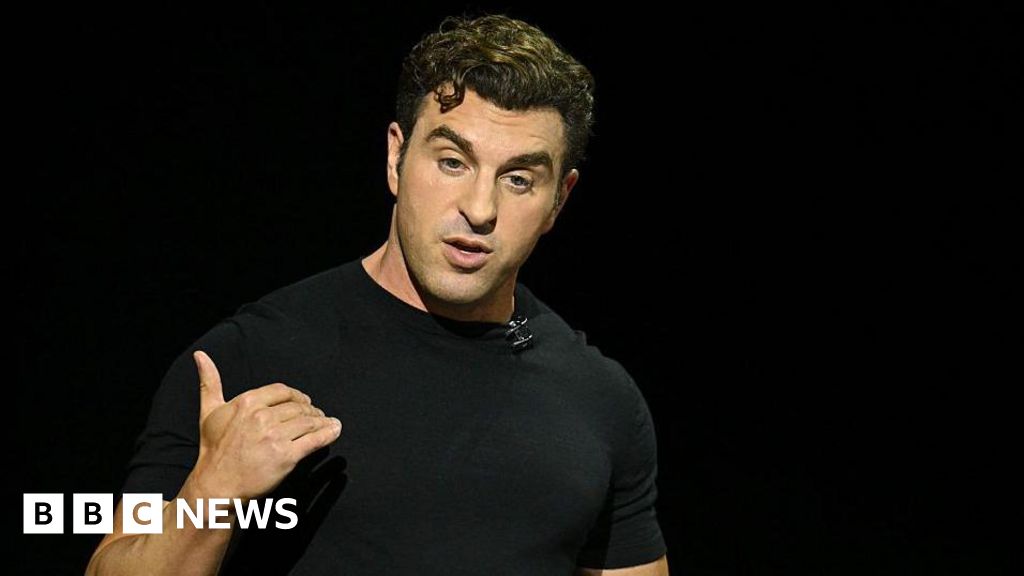Way back in the day, I participated in a kid’s gardening competition and won! Through my years in marketing, I’ve realized that gardening and marketing have a lot in common — especially when it comes to content seeding.
Every summer, I start a vegetable garden. I purchase seeds, plant them, tend to them, and, with the right weather conditions, help them grow. Content seeding is very similar. However, instead of hoping to grow a prized zucchini, marketers “plant” content to grow brand awareness and leads.

To better understand how content seeding works, I spoke with Jonathan Goldberg, founder and CEO of Kimberfire. I’m sharing what I learned during the conversation about content seeding and how you can use it to market your brand.
Table of Contents
What is content seeding?
Content seeding is a strategy in which content creators plant a brand’s content across various platforms to reach their target audience and attract leads. That includes partnering with an influencer to promote a product on social media.
Content seeding allows brands to highlight their content in places where target audiences will see and engage with it.
Here’s what Goldberg had to say, “Content seeding is the strategic distribution of valuable content across various platforms and networks to organically reach and engage your target audience.”
Goldberg notes that the process involves planting content in places where it can grow visibility, like through blogs, social media, or partnerships. This leads to increased brand awareness and trust.
If you’re an avid podcast listener like me, you’ve likely heard an ad about Quince, an online fashion retail brand. Typically, podcast hosts read the Quince ads and give glowing reviews about the brand. I won’t lie. These reviews have convinced me to check Quince’s website more than a few times. That’s content seeding.
Part of the reason content seeding (sometimes referred to as product seeding) is so successful is that the content shared by influencers or partners is relevant to the target audience. And brands know this because they’ve conducted market research, which gives them clues about where to seed content.
What is influencer seeding?
Influencers are a prime choice for content seeding because they usually have large audiences. These audiences have been proven to trust influencers more than their friends.
Goldberg explained influencer seeding to me, too. He said, “It’s the process of sending products or services to influencers in your target demographic with the aim of encouraging authentic reviews, content creation, and word-of-mouth marketing.”
According to Goldberg, successful influencer seeing involves finding advocates who align with your brand values and audience to amplify your message in a relatable.
Like content seeding, using influencers who align with the interests of your target audience will yield the best results because their audience trusts them. For example, you can collaborate with:
- Industry leaders who are trusted experts in their niche.
- Micro-influencers who have built a small but tight-knit community of loyal followers.
Working with influencers can be an advantage when you segment or narrow your target audience.
Social media platforms are inundated with marketing campaigns and ads. Make your product or service stand out by tapping into smaller influencers’ networks and using word-of-mouth cred.
Content Seeding vs. Gifting
Before we get too far into it, I think it’s helpful to discuss the differences between content seeding and gifting. I like to think of gifting as a strategy under the content seeding umbrella.
Gifting is a great marketing tactic for eliciting genuine comments about your brand. Typically, your brand identifies an influencer in your niche, and you send them your product or service for free. You would include a note that says, “If you like our product, consider talking about us on your channels.”
With gifting, you leave the ball in the influencer’s court. Since your product or service is a gift, they don’t technically have to use it. But it’s great when they do because this helps with your reach.
Gifting works best when you target several influencers within your niche. This gives you a better chance of spreading the word about your brand. However, influencers aren’t the only way to facilitate product seeding. You can also contact an agency specializing in seeding or contact thought leaders for a partnership.
Where Content Seeding is Commonly Used
While blogging and editorial outlets previously served as the primary avenues for content seeding, social media platforms have become the dominant method of choice. Content seeding works on platforms like:
- TikTok.
- Twitter.
- YouTube.
- Facebook.
- Instagram.
- LinkedIn.
- Podcasts.
- Pinterest.
But, all of these platforms are useless if you don’t have a plan to use them. Next, we’ll dig into tips for creating an effective influencer seeding campaign.
Creating an Influencer Seeding Strategy
Goldberg has used content seeding to spread awareness about his brand, Kimberfire. So, I asked him for tips on creating a product seeding strategy. Here’s what Goldberg told me.
1. Set your end goal.
Before you start planning your seeding strategy, think about your end goal. For instance:
- What would you like to accomplish?
- Are you looking to build brand awareness or boost sales?
- Are you trying to grow your follower count?
Once you have established your goals, you can assess which platform would be most effective for achieving them.
2. Research ideal influencers.
By now, you should have clear personas to identify your target audience. Now, it’s time to identify your ideal influencers. When I asked Goldberg about this, he reiterated that working with micro- and nano-influencers whose audience aligns with your brand values is best.
With that information in hand, look into the types of people they would follow and their interests. Look at trending hashtags or topics about your brand and the influencers who follow them.
3. Send relevant content, services, and products.
You should make sure that what you send to an influencer to promote is relevant to their brand and audience.
For example, if you sell artisan chocolates, you may want to reach out to influencers who have content dedicated to chocolate sweets and desserts instead of just sending products to foodies in general. This is where going niche pays off.
4. Craft a clear value proposition.
Goldberg told me that when working with influencers and partnerships, you must be clear on your brand’s value. He said, “Showcase how your product enhances their lives while offering creative freedom for authentic storytelling.”
A clear value can convince influencers to try your product or service and talk about it favorably on their channels.
5. Provide guidance, not constraints.
One of Goldberg’s most interesting tips is to provide your influencers with guidance, not constraints. He said, “Share brand guidelines, but let influencers express your product’s value in their unique voice.”
An influencer’s audience will immediately know if they’re being sincere in their product recommendation. This gives them the freedom to tell their story (and yours!), which is much more authentic.
6. Engage and comment.
If an influencer posts anything regarding your brand, engage with it. This can include liking the post, commenting, or sharing. Even if the feedback is negative, you can thank them for their honest review and learn how to improve.
7. Measure the outcome.
Examine the reach of influencer posts, traffic statistics, and engagement (shares, comments, brand mentions). Goldberg suggested using your platform’s analytics to measure your performance. This way, you can adjust your strategy as needed.
For e-commerce, track any promo codes or affiliate links used during the campaign. These metrics will help you determine what worked and what didn’t.
Content Seeding Examples
If you‘re thinking of ways to get into content seeding, which platforms to use, and what content to share, don’t worry — I’ve got examples of content seeding for you. Let’s look at a few.
1. Neva LaRue x EatOkra

Neva LaRue, an Instagram influencer, has become a well-connected micro-influencer within the foodie niche. On her Instagram, She collaborates with EatOkra.
This app helps people find Black-owned eateries to support. In her post, LaRue shows pictures of delicious food and tags the restaurants (along with the app) so people can support them, too. With so much information, the post is genuinely helpful, earning trust.
What I like: Because her audience trusts her opinion, LaRue’s endorsement spreads awareness of the app and black-owned restaurants.
2. Charli D’Amelio X Geske Beauty Tech

Charli D’Amelio partnered with Geske to promote their beauty products. This partnership aligns with D’Amelio’s followers — young people who look to her for lifestyle advice — and Geske’s audience — young people who want new beauty products.
D’Amelio also gained new engagement from the partnership while building her credibility as an influencer. I think this is an excellent example of how content seeding can work both ways to build brand awareness.
Pro tip: You don’t need to work with the biggest influencers. You just need to share the same audience.
3. Dolly Chawla X Daniel Wellington

Beauty and lifestyle influencer Dolly Chawla partnered with Daniel Wellington, a fashion brand, to promote its watches. For this campaign, Daniel Wellington asked its many influencers to use the same hashtag in their posts.
Working with multiple influencers in various niches and using the same hashtag was a great strategy for driving awareness and interest in the luxury watch brand. The brand can now get in front of multiple audiences.
Pro tip: A diverse group of influencers can help you reach multiple communities that may be interested in your products.
4. Becky Hillyard x Saks Fifth Avenue

Blogger Becky Hillyard collaborated with Saks Fifth Avenue to show her followers outfit inspiration from the brand. Hillyard has over a million followers on Instagram, making her channel an excellent marketing resource for Saks. Hillyard used her DMs to share direct links with her followers, which engaged her audience and drove traffic to Saks.

I appreciate bloggers who take their partnerships off social media and onto their websites. Becky also partnered with Saks to create brand awareness on her blog, which helped attract a larger audience for the brand.
What I like: I love the direct interaction between Hillyard and her audience. This is a great way to get products in front of consumers, all from a trusted style guide.
5. Anna Shields X Masterclass

Parenting Influencer Anna Shields promoted the learning platform MasterClass to her audience. The key here? The class she chose to promote. The course, taught by James Clear, teaches students how to build better habits to improve their lives. As you can see in the comments, that topic resonated with parents in her audience.
Shield’s partnership with MasterClass is an invitation for her followers to build similar, life-changing routines. I don’t think it’s too hard to imagine, but if 10,000 of Shields’s followers are interested in her story, the website could greatly benefit from dropping their branded content on her TikTok.
Make Content Seeding Work for You
My vegetable garden thrives every year because of a combination of my work, the right soil, and favorable weather conditions. I’ve found the same to be true for content seeding. A perfect content seeding strategy is built from brands finding the right partners, a great platform, and a favorable product or service to promote.
You don’t have to invest huge amounts of money into content seeding. Choosing micro-influencers, guest bloggers, and podcast interviews are also more cost-effective ways of content seeding.
Editor’s note: This post was originally published in November 2019 and has been updated for comprehensiveness.
Credit: Source link

![What Is Content Seeding & How Does It Work? Here’s the Expert Take [+ Examples] What Is Content Seeding & How Does It Work? Here’s the Expert Take [+ Examples]](https://www.hubspot.com/hubfs/content-seeding-1-20250123-2593003.webp)









